The use of digital twins for smart buildings has the potential to predict issues, optimise systems, and facilitate proactive maintenance.
The advent of digital twin technology has opened up a new world of possibilities in the realm of smart buildings. This innovative approach, which involves creating a virtual replica of a physical entity, has the potential to revolutionise building management, enhance energy efficiency, facilitate predictive maintenance, and optimise space utilisation.
However, while the opportunities seem immense, they are not without challenges, and the full potential of digital twins in the context of smart buildings is yet to be realised. As we move forward, the question becomes: How can we harness the power of this technology to make our buildings smarter, more efficient, and more sustainable?
Understanding digital twin technology
Digital twin technology utilises real-time data, simulations, and machine learning to model complex systems, such as smart buildings, providing a digital mirror of the building’s operations, activities, and processes. This digital representation provides deep insights, simulates scenarios, and aids in decision-making processes.
Understanding this technology requires appreciating its three fundamental components: the physical product, the virtual product, and the data that links the two. The physical product is the real-world object or system; the virtual product is its digital replica, and the data element interconnects them in real time.
Revolutionising building management
The application of digital twins in building management allows for proactive problem-solving. Beyond mere data collection, these virtual counterparts employ predictive analytics to forecast future system behaviour. This ability to anticipate issues before they manifest not only mitigates downtime but also results in substantial cost savings.
Moreover, digital twins can help improve buildings’ energy efficiency. By tracking and analyzing energy usage patterns in real-time, managers can identify areas for improvement and make data-driven decisions to modify consumption habits.
Enhancing energy efficiency
How can digital twin technology significantly enhance energy efficiency in buildings?
With the help of advanced sensors and Internet of Things (IoT) technology, digital twins can monitor and analyse a building’s energy consumption patterns in real time. They can identify energy inefficiencies, such as unoptimised HVAC systems or excessive lighting usage, and suggest appropriate corrective actions.
Further, digital twins can predict future energy usage based on historical data and adjust building systems proactively to optimise energy consumption. They can also simulate different scenarios to identify the most energy-efficient strategies.
Predictive maintenance
Another compelling application of digital twins for smart buildings is through predictive maintenance. This technology enables facility managers to anticipate potential system failures and address them proactively, thus preventing costly downtime and enhancing the lifespan of building systems.
Predictive maintenance using digital twins involves the creation of a virtual model of a building system, like HVAC or electrical, which can accurately mimic its real-time performance. Sensors installed on the physical system feed data to its digital counterpart, allowing it to simulate different scenarios and predict potential issues.
For instance, digital twins can identify abnormal patterns or anomalies in the system’s operation, indicating a possible malfunction. This can alert the facility management to take necessary preventive measures before a full-scale system failure occurs.
Moreover, digital twins can also help in optimising maintenance schedules. Instead of adhering to routine maintenance irrespective of a system’s condition, facilities can implement condition-based maintenance.
Optimising space utilisation
Digital twins significantly contribute to optimising space utilisation, enhancing both operational efficiency and occupant comfort.
Facility managers can visualise and model different scenarios, providing a deeper understanding of how space is used and how it can be optimised.
For example, a digital twin can help determine if a conference room is underused and could be better used as an office space or a relaxation area. It can also identify areas that are often overcrowded and suggest changes to alleviate congestion.
With the inclusion of IoT sensors and devices, digital twins can also provide data on occupant behaviour and preferences. This allows for the design of spaces that optimise physical usage and enhance the comfort and productivity of their occupants.
Digital twins and sustainability
As we mentioned earlier, digital twins can predict a building’s energy consumption patterns, identifying areas of inefficiency or waste. These insights can guide decision-making, leading to more sustainable practices such as optimized HVAC systems, strategic placement of solar panels, or implementation of energy-saving lighting systems.
Furthermore, digital twins can monitor real-time data from smart buildings, ensuring optimal resource use. By alerting operators to any deviations from optimal conditions, immediate corrective actions can be taken, preventing wastage and inefficiencies.
Digital twins can also facilitate predictive maintenance, reducing the need for resource-intensive repairs or replacements, prolonging the lifespan of building components and contributing to sustainability.
Future outlook of digital twins in smart cities
Looking forward, the application of digital twins stands to revolutionise urban planning and management in smart cities. The potential for this technology to create highly efficient and sustainable urban environments is immense.
For example:
| Applications | Benefits |
Urban planning | Improved decision-making
Resource management | Enhanced efficiency
Service delivery | Optimized operations
Infrastructure maintenance | Predictive analytics
Environmental monitoring | Sustainable solutions
Digital twin technology can be instrumental in developing proactive solutions to urban challenges, rather than reactive measures. By creating virtual models of city systems, planners and managers can identify potential issues before they occur, enabling them to implement preventative measures and mitigate impacts.

